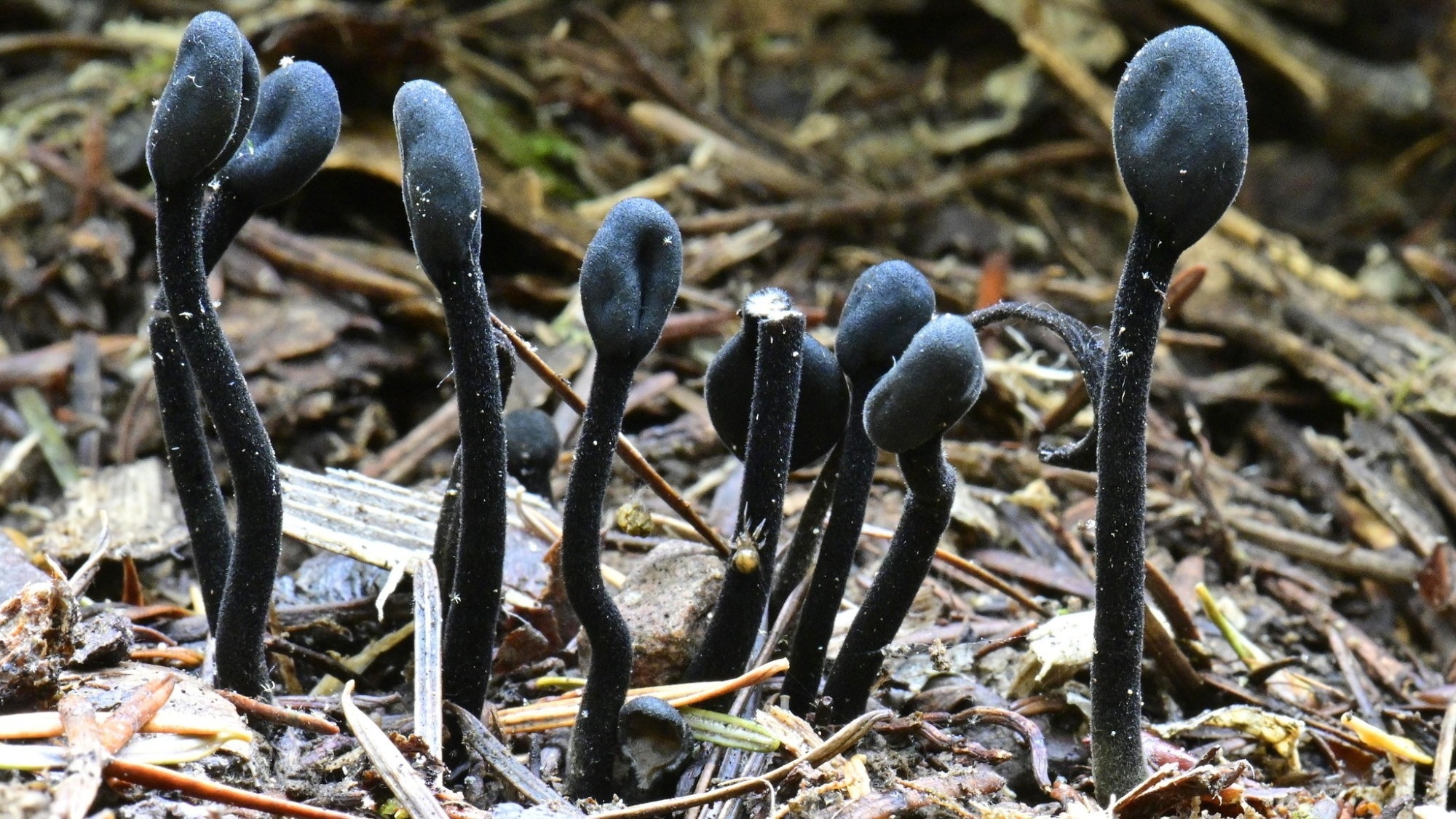A new study led by a research group from the University of Alberta has shown that nearly 600 apparently diverse fungi that never quite discovered a fit along the fungal family tree have been shown to have a general ancestor. This group made use of genome sequencing to provide such unusual creatures their own classification home.
 In a class of their own: The earth tongue is one of 600 “oddball” fungi that were found to share a common ancestor dating back 300 million years, according to U of A researchers. Image Credit: Alan Rockefeller, CC-BY-SA-4.0.
In a class of their own: The earth tongue is one of 600 “oddball” fungi that were found to share a common ancestor dating back 300 million years, according to U of A researchers. Image Credit: Alan Rockefeller, CC-BY-SA-4.0.
They don't have any particular feature that you can see with the naked eye where you can say they belong to the same group. But when you go to the genome, suddenly this emerges. I like to think of these as the platypus and echidna of the fungal world.”
Toby Spribille, Project Principal Investigator and Associate Professor, Department of Biological Sciences, University of Alberta
Spribille, Canada Research Chair in Symbiosis, is in relation to Australia’s famed Linnaean classification system-defying monotremes. This produces milk and has nipples, but lays eggs —which were considered to be the source of debate as to whether they were even real.
“Though nobody thought our fungi were fake, it’s similar because they all look totally different.”
With the help of DNA-based dating methods, the team discovered that this new class of fungi, known as Lichinomycetes, dropped from a single origin 300 million years ago, or 240 million years prior to the destruction of dinosaurs.
David Díaz-Escandón, who executed the study as part of his PhD thesis, describes that such “oddball” fungi were earlier sprinkled throughout seven different classes. This is a high-level grouping that in animals would be compared to the groups known as reptiles or mammals.
Working with a research group who came from seven countries to get material from the fungi, he sequenced around 30 genomes and discovered that all classes but one declined from a single origin.
“They were classified, but they were classified into such different parts of the fungal side of the tree of life that people never suspected they were related to each other,” says Díaz-Escandón.
Such fungi include forms as altered as earth tongues—eerie tongue-shaped fungi that rocket vertically out of the ground—beetle gut microbes, and a fungus discovered in tree sap in northern Alberta. Also, they include a few strange lichens that tend to survive in extreme habitats like South America’s Atacama Desert. This is known to be the driest non-polar desert in the world.
What is really fascinating is that despite these fungi looking so different, they have a lot in common at the level of their genomes. Nobody saw this coming.”
Toby Spribille, Project Principal Investigator and Associate Professor, Department of Biological Sciences, University of Alberta
Depending on their genomes, which are small than those of other fungi, the team anticipates that this group of fungi relies on other organisms for life.
Their small genomes mean this class of fungi have lost much of their ability to integrate some complex carbohydrates. When we go back to look at each of these fungi, suddenly we see all of them are in a kind of symbiosis.”
Toby Spribille, Project Principal Investigator and Associate Professor, Department of Biological Sciences, University of Alberta
Spribille notes the new study will be essential to the wider study of fungal evolution. This is particularly how fungi tend to inherit essential biotechnological features like enzymes that collapse plant matter.
Also, the new group could be a source of new information regarding the past fungal extinctions.
Spribille added, “We think it’s likely that the diversity we see today is just the tip of the iceberg that survived. And we don’t have that many examples of this kind of thing in fungi.”
Source:
Journal reference:
Díaz-Escandón, D., et al. (2022) Genome-level analyses resolve an ancient lineage of symbiotic ascomycetes. Current Biology. doi.org/10.1016/j.cub.2022.11.014